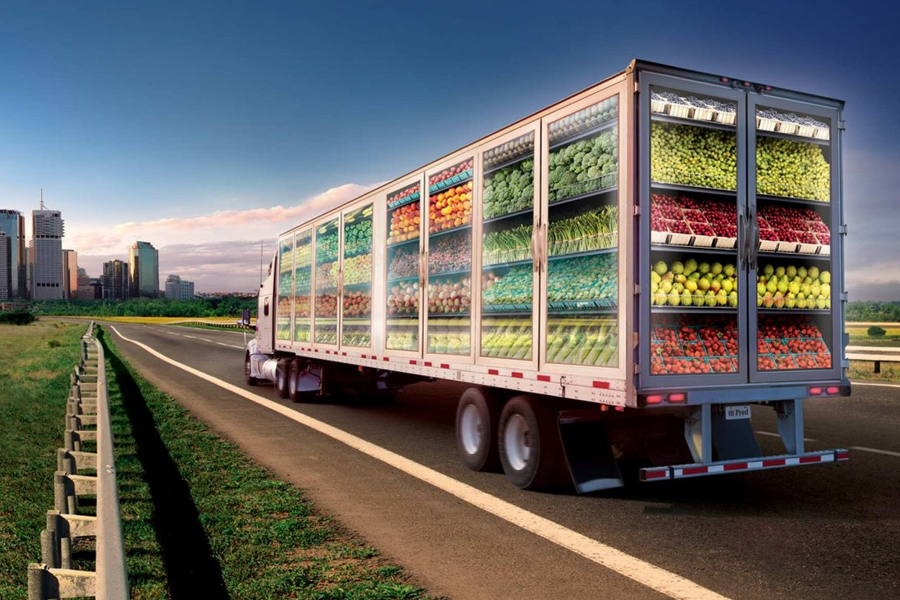The future of autonomous vehicles in refrigerated transport

The advent of autonomous vehicles (avs) is set to revolutionize the logistics industry, promising to reshape the landscape of refrigerated transport in ways previously unimaginable. As technology advances and regulatory frameworks evolve, the potential for self-driving vehicles to enhance efficiency, reduce costs, and improve safety in the cold chain is becoming increasingly evident. This blog post explores the cutting-edge future of autonomous vehicles in refrigerated transport, delving into developments not commonly discussed in mainstream analyses.
Enhancing efficiency and reducing delays
Autonomous vehicles are poised to significantly boost efficiency in refrigerated transport. With the ability to operate around the clock without the need for rest breaks, avs can ensure that perishable goods are transported more swiftly and reliably, reducing spoilage and waste.
Smart routing:
AVS equipped with advanced navigation systems can optimize routes in real-time, avoiding traffic congestion and environmental conditions that might jeopardize the quality of sensitive cargo. This capability ensures that perishable goods reach their destinations in the freshest possible state.
Cutting operational costs
One of the most compelling advantages of autonomous vehicles in refrigerated transport is the potential for substantial cost savings. By eliminating the need for human drivers, companies can save on labor costs, which constitute a significant portion of overall expenses in logistics operations.
Energy efficiency:
Autonomous vehicles, particularly those powered by electric or hybrid engines, can also contribute to reduced fuel consumption and lower emissions. Smart driving algorithms optimize acceleration, cruising, and braking, further enhancing energy efficiency and reducing the carbon footprint of refrigerated transport.
Improving safety and reducing risks
The integration of autonomous technology promises to enhance safety in refrigerated transport. Self-driving vehicles are equipped with an array of sensors, cameras, and radar systems that can detect and respond to potential hazards more quickly and accurately than human drivers, reducing the risk of accidents.
Temperature control:
Autonomous systems can continuously monitor and adjust the refrigeration units’ settings, ensuring that the cargo remains at the optimal temperature throughout the journey. This level of precision can significantly reduce the risk of spoilage due to temperature deviations.
Overcoming regulatory and technical challenges
Despite the potential benefits, the widespread adoption of autonomous vehicles in refrigerated transport faces regulatory and technical hurdles. Regulatory bodies worldwide are grappling with how to safely integrate AVS into existing transport frameworks, while technological challenges, such as ensuring reliable performance in diverse weather conditions, remain.
Collaboration and innovation:
Stakeholders from across the industry, including vehicle manufacturers, technology companies, and regulatory agencies, are collaborating to address these challenges. Pilot programs and testbeds are crucial for gathering data, refining autonomous technologies, and developing regulatory standards that ensure safety and reliability.
Looking ahead: the road to adoption
The journey towards fully autonomous refrigerated transport is a marathon, not a sprint. As technology advances and societal acceptance grows, the potential for autonomous vehicles to transform the cold chain becomes increasingly tangible.
Partnerships and integration:
Successful integration of AVS into refrigerated transport will require close collaboration between technology developers, logistics providers, and regulatory bodies. Strategic partnerships and investments in technology will be key drivers of innovation and adoption in the coming years.
Conclusion
The future of autonomous vehicles in refrigerated transport holds great promise, offering the potential to revolutionize the way perishable goods are moved across the globe. By enhancing efficiency, reducing costs, and improving safety, autonomous technology could play a pivotal role in strengthening the cold chain. While challenges remain, the ongoing efforts of stakeholders across the industry to address these issues suggest a bright future for autonomous refrigerated transport, marking a new era of innovation and sustainability in logistics.




